Today we are highlighting a case study that was presented by Gatorade at our #SMSsummit event in San Francisco last year, which focuses on how brands can use native ad products within social platforms in order to create compelling customer experiences.
If you are reading this blog, the chances are you understand that the internet has fundamentally changed the way the world operates, especially the business world. Traditionally access to information and content has always been dictated by a small group of gatekeepers: media & advertising executives on the coasts.
However, we have exponentially more mediums and distribution outlets than past generations. This proliferation of content has led to much more competition when it comes to acquiring consumer attention.
The advent of technologies like DVR and the popularity of streaming services like Netflix, HBOGO, YoutubeTV, Spotify, etc. have made it easy for viewers and listeners to consume content on-demand rather than at the moment it originally aired. Couple the popularity of on-demand content with the adoption of ad blockers and it’s not hard to see how the billions of dollars currently spent on traditional mediums like television will quickly shift into social advertising platforms.
Within this context, brands now have to completely change the way they engage with potential customers because the power now lies in the hands of the consumer and consumer attention is inside our phones —- with the dominant platforms being social media outlets like Facebook, Twitter, Instagram & Snapchat.
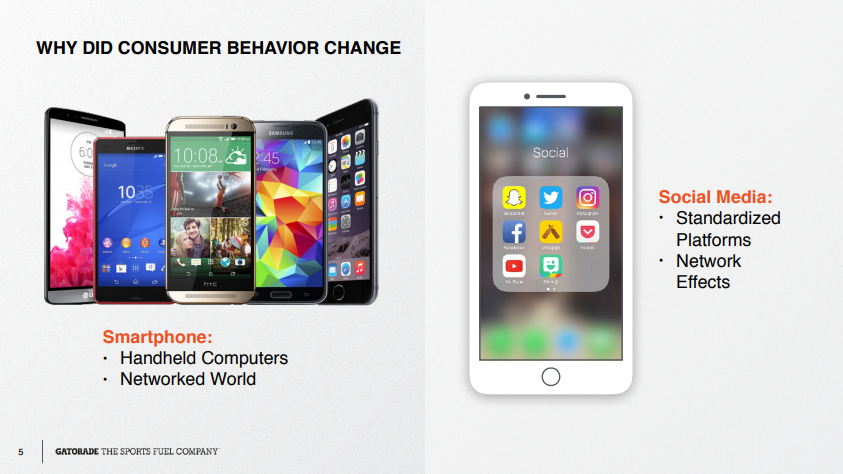
At our #SMSsummit in San Francisco last February, we were joined by Michael Smith (Head of Digital Strategy for Gatorade)who spoke with our attendees about how Gatorade has managed to stay true to their brand while speaking to their customers natively through their preferred social platform.
One of the things Michael focused on in his presentation is the evolution of digital advertising. He made the case that we are currently well beyond the phase where consumer behavior has changed (as far as how we are consuming content & engaging with brands), and just past the point that ad spending has begun to mimic consumer behavior, but not quite to the point that we have fully efficient and transparent ad products.
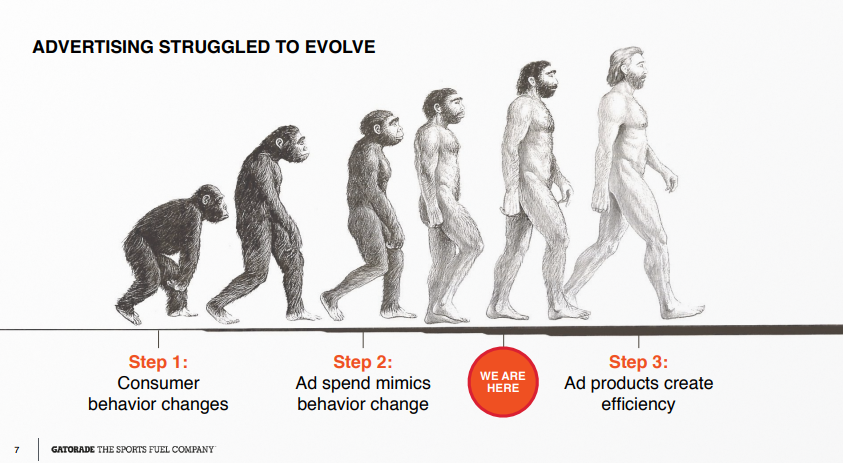
That being said, Gatorade has executed on some innovative campaigns on Facebook & Snapchat that capitalize on the native functionality of their respective ad products. Smith made the case during his presentation that ad products within these platforms have actually gotten a lot better, allowing for brands to create a more compelling experience for their customers. Below is a slide from his presentation that shows the ways in which ad products have improved over the last few years, including the use of full-screen images and user-generated content tools (UGC) like filters and augmented reality (AR).
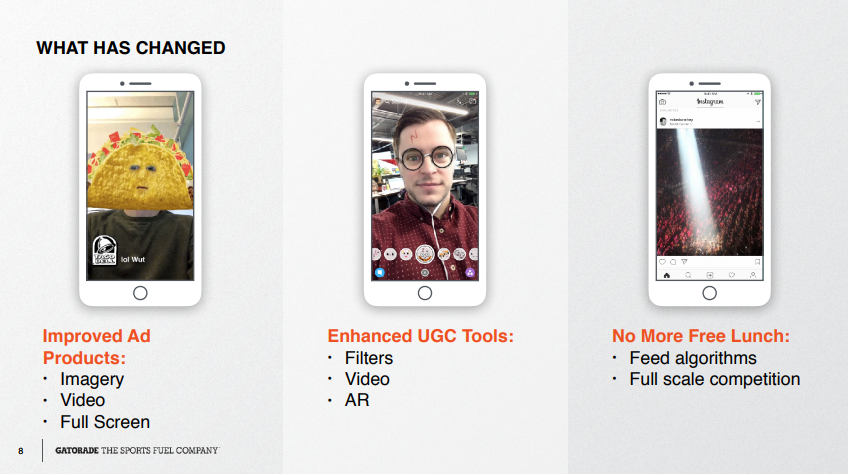
When evaluating how to engage with these social platforms, the Gatorade team set up a three-part framework to help lay out the path forward.
- Identifying The Use Case– what are the right use cases from a consumer perspective? How would they natively engage with this platform in a way that suits their needs?
- Add Value– rather than trying to pitch a specific product to potential customers, how can you provide value to their everyday lives and their online experience?
- Be True To Your Brand– Stay in your lane. Gatorade is focused on improving athletic performance at its core.
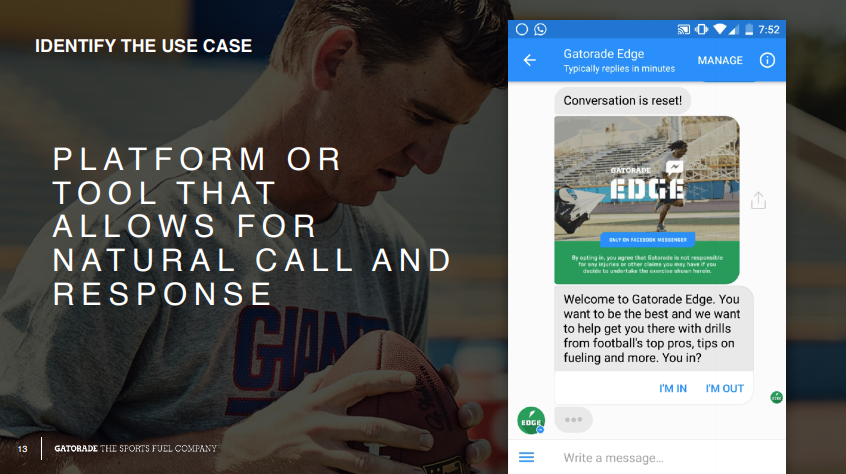
The use case that we’re going to focus on in this blog is one they call Gatorade Edge. For this campaign, Gatorade’s team built out a chatbot on the Facebook messenger platform that would all Gatorade to interact with young football players by having them opt-in if they were interested in getting exclusive training tips from some of the NFL’s top players.
To make sure that this sort of experience was compelling for their potential customers, Gatorade was able to personalize the training tips by the position of the student-athlete. This sort of personalized content makes sure that your brand is delivering value to your customer, by not wasting their time with information that may be irrelevant to their needs.
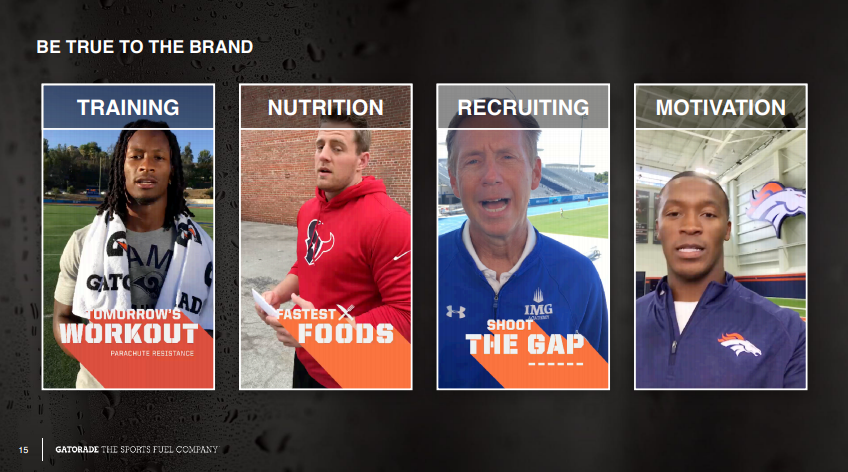
The results that Smith shared with us are undeniable. With a nearly an 80% opt-in rate, it’s proof that personalizing the content allowed for a much higher engagement rate than a casting a wide net across all positions. The information itself was also deemed valuable by the users themselves because well over 50% continued to want more videos and more information.
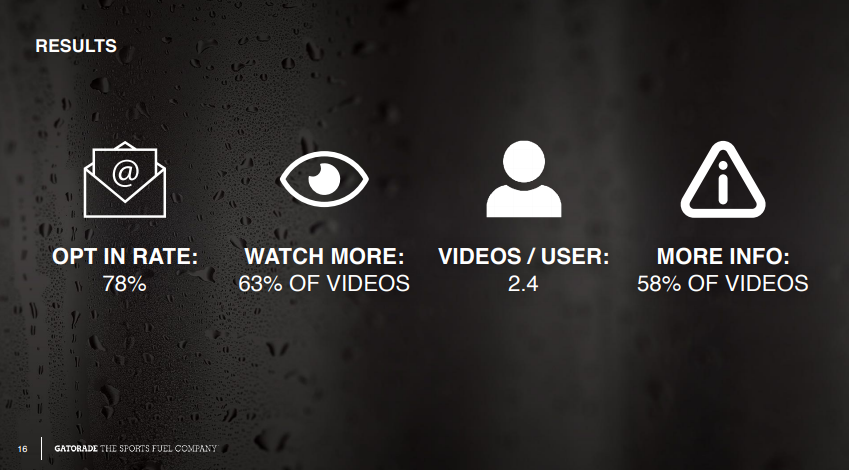
It’s clear from just this test case that when brands put the time and resources into building out ad campaigns that are native to the social platforms their customers are on, that it will pay off. With the ad products continuing to evolve every day, there is a myriad of ways that brands can put their unique touch on their customer’s online experiences.
Two other test cases that Gatorade presented at the San Francisco #SMSsummit had to do with building compelling experiences on Snapchat.
The first called “The Dunk” was created in conjunction with the Super Bowl and garnered 61 million swipes and 165 million platform views.
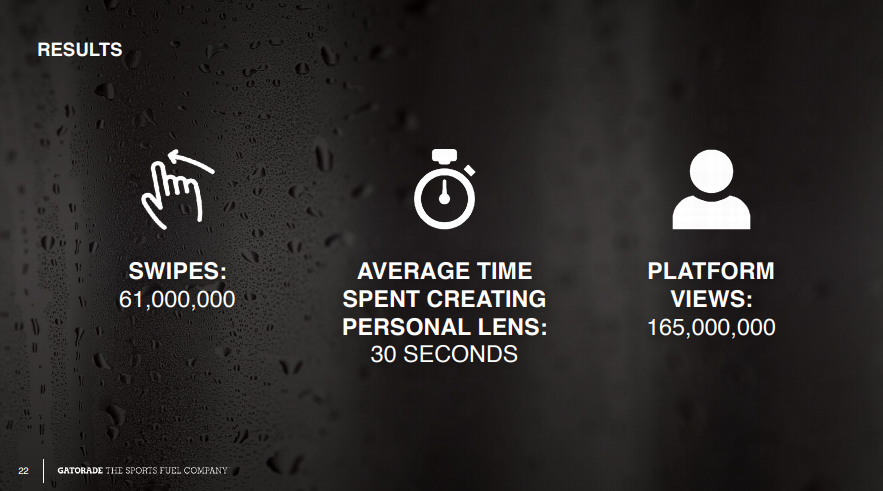
The last example was a campaign that Gatorade called “Match Point”, which gave Snapchat users an opportunity to experience the excitement around Serena William’s quest to secure her 23rd Grand Slam title. For this campaign, they actually built out an 8-bit video game that could be played inside of the Snapchat app. We don’t have access to the video from the presentation, but if you were in our audience you were able to see what the game actually looked like!
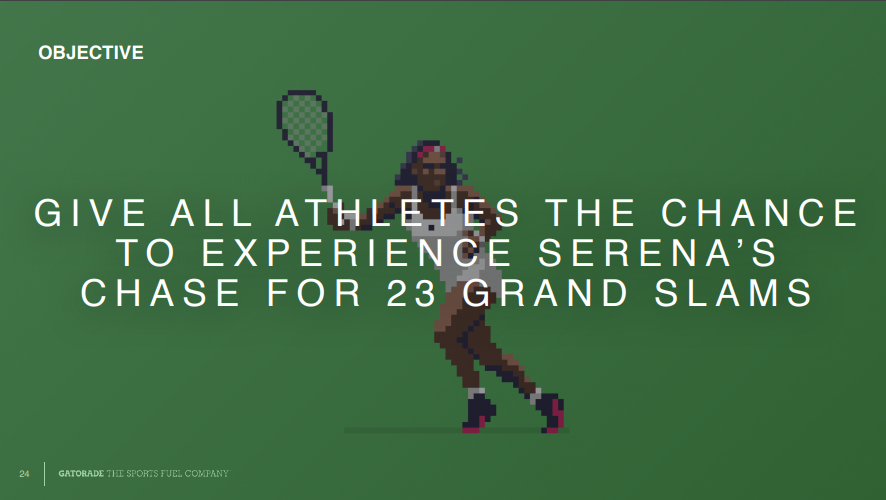
To learn more about these last two examples of native ad campaigns by Gatorade, you can download the full presentation & the MP3 file from San Francisco in our #SMSsummit Content Library for free!
However, if you want to see these type of real-world social media case studies presented by some of the world’s top brands (like Gatorade), we’ll be in New York City October 10-12th!









